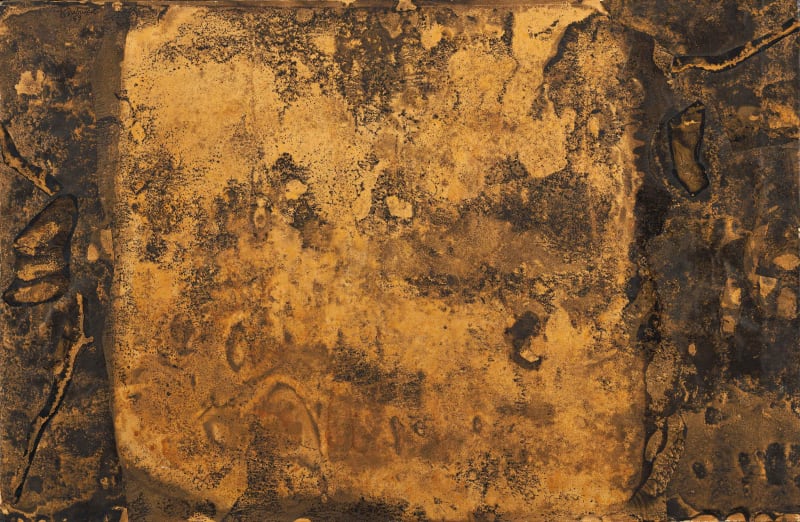With a selection of artworks from:
Ma Galerie is presenting Still Lifes (De silencieuses natures), an exhibition bringing together four artists: Pauline Bazignan, Jean Dubuffet, Giuseppe Penone and Luzia Simons who has also occupied the main courtyard of the Archives Nationales in Paris with large photographs. Ma Galerie is offering a dialogue between these artists around still life – nature morte in French.
The exhibition bypasses this French term with its rather funereal rigidity to show, by adopting the English expression and its literal translation into French, the life that remains after all. The charred life of fruits for Pauline Bazignan or the freshly cut life of the flowers in Luzia Simons’ arrangements; the invasive life of Giuseppe Penone’s interweaving vegetation; finally, life despite all in modelled clay like a Holy Shroud or matter like organic cells in Jean Dubuffet’s work.
The dialogue between the four artists is presented as a silent conversation; a pala sacra with tenuous and repeated echoes. Because if the expression still lifes includes a misleading double in its French translation, the exhibition also plays on double vision, a hidden meaning that is different from the visible meaning. Pauline Bazignan’s paintings arouse, like an optical afterglow, the hallucinated efflorescence of the likes of Redon’s work on the Domecy Panels. Her desire is to devote the entire surface of her work to the vital and concentrated force of an entity deprived of its symbolic finery. In Interior, the principle of cooking has created a mute life, petrified and eternally present, like the fossilized trace of a vital process. Combustion has suspended the putrescible destiny of fruit; the decay promised to every living organism has been stopped by fire to leave only the pulpous contours of a previous life.
The panoramas of Luzia Simons’ freshly cut tulips are less the evocation of an allegorical meaning of flowers than the falsely mellow and clearly brutal metaphor of an accumulative and speculative logic that Dutch capitalism of the 17th century developed around the cultivation of the lily. In the video Blacklist, the beam of a scanner sifts an armful of flowers and animates it with undulating life. It causes it to vibrate gently through the pathways of its luminous rays and finishes by withdrawing itself slowly to return the bouquet to its original obscurity.
At first, Giuseppe Penone’s sculpture seems to be associated with the types of anatomical objects whose sensual and cruel aesthetic appear to link it to an écorché by Gautier-Dagoty. However, nothing in this terracotta comes from sections of cadaver studies; it is on the contrary invisible life that Penone has wanted to make palpable. On looking at it more closely, an imaginary breath passing through the terracotta bronchi and trachea may be seen, going as far as making the mark of the mobile jaw move, as if driven by a deep breath of exhaled air.
Jean Dubuffet’s work is at the confluence of two states, between remodelled matter, reconstructed, rethought, and the organic resurgence of primary immortal cells. The taciturn artist’s quest for meaning, little said but compact, dense, develops agglomerated bodies, sedimented, nested and shows the traces of a slow and silent observation of surrounding things. The Palm Grove with Three Birds subtly expresses the vitality of an oasis sap very clearly.
Each of the four artists has formulated a different approach to the traces that leave life when it circulates, when it freezes or when it eclipses itself. It is a silent conversation.
Mathias CHIVOT, Historian of art



